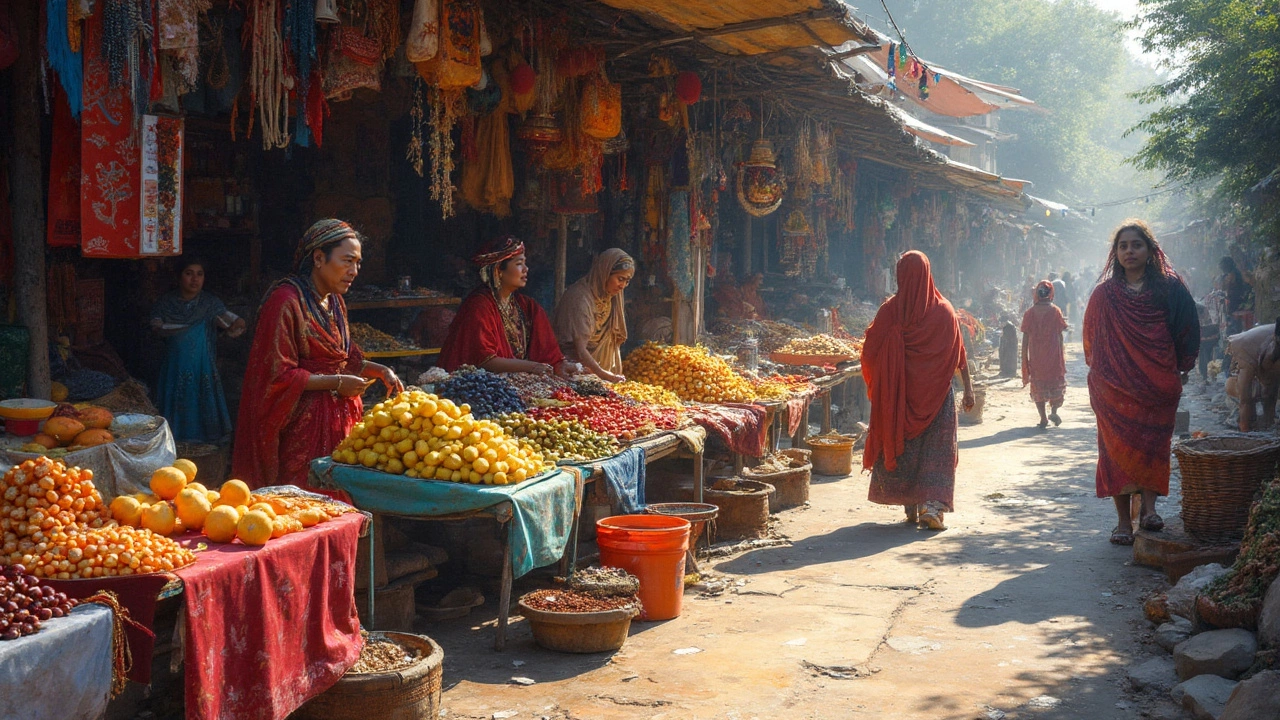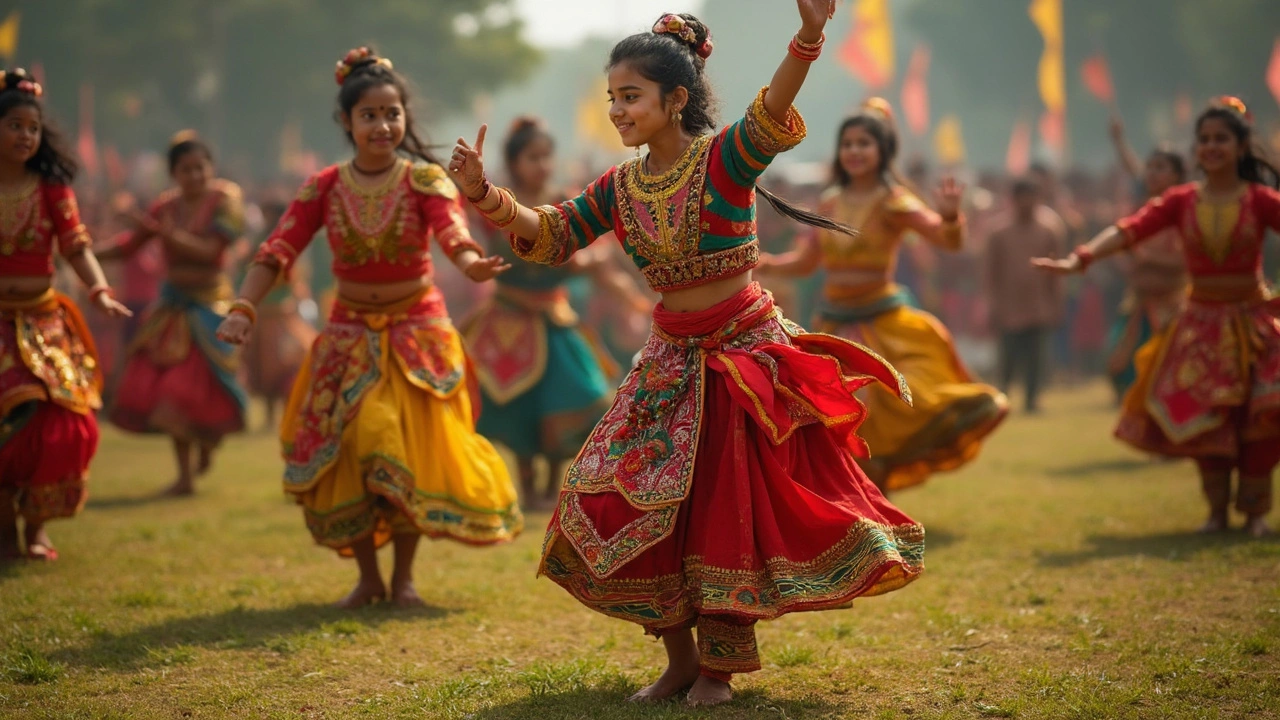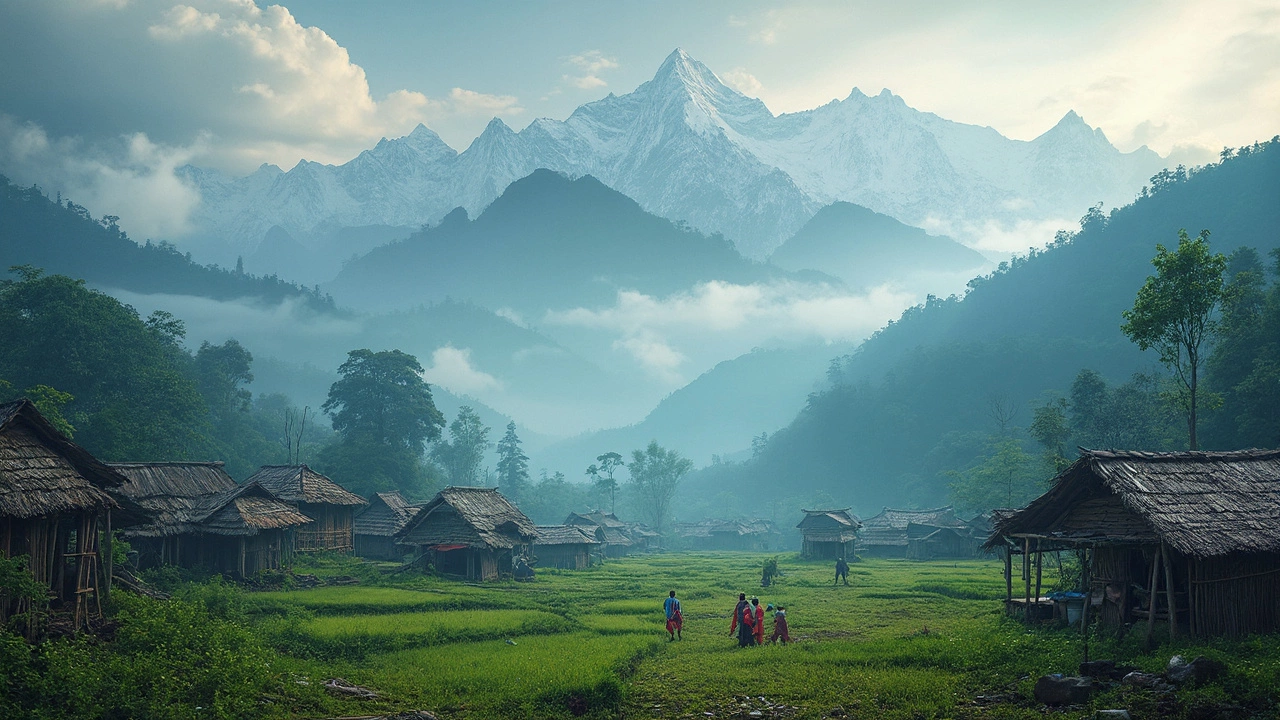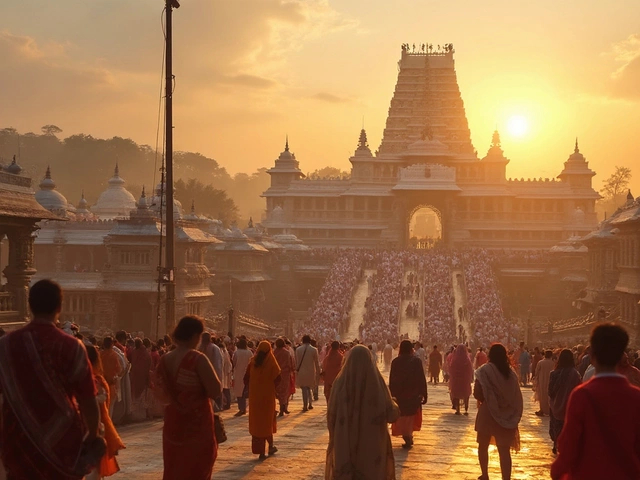Wondering if it's the right time to pack your bags for North East India? You're not alone. This region, while beautiful, has had its nuances in the past when it comes to travel safety. However, things have been changing rapidly. As of 2025, the North East is blossoming into a hot spot for curious globetrotters.
First things first: is it safe? Yes, it is generally safe to explore this fascinating part of the world. Recent developments have brought better infrastructure and increased security, leading to a much more traveler-friendly environment. As with any destination, it's wise to stay informed about local advisories, yet most visitors find the locals welcoming and eager to share their rich heritage.
While safety is a priority, the real allure of North East India is its treasure trove of cultural experiences. Imagine colorful festivals, untouched landscapes, and diverse tribes each with their own unique traditions. Does it sound enticing yet?
- Current Safety Situation
- Rich Cultural Experiences
- Natural Wonders to Explore
- Practical Travel Tips
- Why Visit Now?
Current Safety Situation
If you're mulling over a trip to North East India, knowing the current safety situation is crucial. Things have taken a turn for the better, and most travelers find it a welcoming region these days.
Let's get down to specifics. Previously, some areas were a bit sketchy due to socio-political issues. Luckily, recent peace talks have improved the landscape. The state governments are all in, focusing on tourism and making sure visitors have a great and safe time.
| State | Safety Rating |
|---|---|
| Assam | High |
| Meghalaya | Medium-High |
| Arunachal Pradesh | High |
The Union Ministry of Tourism even released a note not too long ago, emphasizing that efforts are ongoing to enhance visitor security. In a recent interview, a tourism board official stated,
"We are committed to ensuring every tourist feels both secure and enriched by North East India's unique charm."
Alright, so what's the golden rule? Keep an eye on travel advisories, particularly if you're venturing into rural pockets. Sticking to major roads and cities is wise, and knowing some local phrases can earn you smiles and perhaps even an invitation to a private tea ceremony!
With better connectivity and improved tourist services, now's your chance to explore the north east's vibrant landscapes without the old worries. Local guides are a boon and can offer insights you won't find online. It's always great to have a local buddy, right?
Rich Cultural Experiences
When you think about North East India, you can't overlook its incredible cultural diversity. Each state here is a melting pot of traditions, languages, and lifestyles practically untouched by mainstream tourism.
First up, we have the mystical land of Sikkim, with its vibrant mix of Hinduism and Buddhism, offering enchanting monasteries that just scream for a photo op. Then there's Meghalaya—often called the 'abode of clouds'—where the Khasi and Garo tribes bring their unique dance and music festivals to life.
Nagaland isn't shy about its culture. The Hornbill Festival, celebrated every December, is its highlight. It's like a big cultural buffet where all the tribes strut their stuff, showcasing everything from traditional dances to exotic foods. As one local elder beautifully put it,
“Our festivals are not just about celebration; they are about keeping our stories alive.”
The stories don't end there. Mizoram also joins in with the vibrant Chapchar Kut festival, which marks the arrival of spring with bamboo dance performances that have a rhythm you can't resist tapping your feet to.
And guess what? These experiences are becoming more accessible, thanks to better connectivity and community-driven tourism initiatives. In fact, visitor numbers are rising as more people discover this cultural treasure trove.
- Get hands-on: Join a workshop in Assam to learn about the age-old art of silk weaving.
- Grab a bite: Don't miss out on the fiery dishes of Manipur, which give quite the spicy kick.
Each state offers a distinct set of experiences that never fail to leave a mark. So, if you're looking to truly experience the vastness of north east India's cultural heritage, now seems like the perfect time to dive in.

Natural Wonders to Explore
North East India is like a treasure chest overflowing with natural beauty. If you’re a nature lover, you're in for a treat. With its rich tapestry of lush landscapes and stunning vistas, this region promises experiences you won't forget.
One of the absolute must-sees is Kaziranga National Park in Assam. It's home to the world's largest population of one-horned rhinoceroses. Spotting these majestic creatures in their natural habitat is nothing short of magical. The park also shelters elephants, tigers, and an incredible variety of birds - perfect for wildlife enthusiasts.
If you're more into pristine landscapes, the Living Root Bridges in Meghalaya will blow your mind. These are formed by living tree roots, painstakingly guided by locals over many years to serve as sturdy natural bridges. It's like walking into a real-life fairy tale.
Are you dreaming of stunning hilly views? The emerald-green hills of Arunachal Pradesh offer some of the most scenic treks you can embark on. The journey to Tawang, with its colorful monasteries and breathtaking landscapes, is an adventure brimming with beauty and serenity.
Last but not least, the unique terrain of the Loktak Lake in Manipur is a sight to behold. It’s the largest freshwater lake in the region, famous for its phumdis—floating islands that dot its surface. A boat ride here, especially during sunset, is a feast for the senses.
Still not convinced? Here’s a small rundown on the variety of landscapes you can explore:
- Mountains: The stunning Eastern Himalayas sweep across the region.
- Waterfalls: Shillong, aka the Scotland of the East, is hemmed in by cascading waterfalls.
- Valleys: Majuli, which is one of the world’s largest riverine islands located in the Brahmaputra River.
- Caves: Meghalaya is famous for its numerous caves, perfect for spelunking enthusiasts.
From the vibrant landscapes to diverse fauna, North East India is like nowhere else on Earth. So, make sure to bring your camera and a curious spirit to truly soak in the wonders of this enchanting region.
Practical Travel Tips
Traveling to north east India can feel like an adventure right out of a travel magazine. But before you head out, it's good to know a few insider tips to make your journey smoother and safer. After all, navigating a new place is easier with some local know-how.
First up, the best time to visit. North East India is known for its stunning landscapes, but the weather can be tricky. The months from October to May are ideal, avoiding the heavy monsoon rains that hit from June to September. Trust me, a dry day makes exploring those gorgeous mountains and tea gardens far more enjoyable.
Now, getting around. Internal flights connect major spots, but if you're up for an adventure, long-distance buses and shared cabs are common and budget-friendly options. They are a bit rustic, but that's part of the charm, right?
Staying connected is key, especially in remote areas. While Wi-Fi might be patchy in certain regions, local SIM cards are inexpensive and a lifesaver when you need them. Airtel and VI are popular choices with decent coverage.
Don't forget health and safety. Carry basic medical supplies, especially if you're trekking. And good news: many parts of North East India are malaria-free, but it's worth checking current advisories just in case.
Foodies, get ready! Local cuisine is a revelation with dishes like momos, bamboo shoots, and fish tanga. Trying local eateries? Ensure they're bustling with locals—it's a sign of delicious and safe food.
Haggling is typical at markets. Be polite but firm, and you might snag unique handicrafts and souvenirs at a great price.
Finally, respect the local customs and cultures. Learning a few phrases in local languages, like Assamese or Manipuri, can bring smiles to faces and enrich your experience.
- Travel during October to May for the best weather.
- Use internal flights, buses, and shared cabs to get around.
- Get a local SIM card for reliable connectivity.
- Try local foods and haggle at markets for unique finds.
- Respect cultural norms and learn a few local phrases.
Equipped with these tips, exploring North India can be an unforgettable experience. So pack your bags, charge your camera, and get ready for an adventure!

Why Visit Now?
If you've been wondering about visiting North East India, now's the time to dive right in! This region is buzzing with activity and is more accessible than ever. With improved connectivity and welcoming locals, it's a traveler's dream waiting to be explored.
First off, the infrastructure has seen some serious upgrades. New roads and more consistent flight routes mean you can navigate between the stunning states much more easily. This has made it a fantastic option for those who love to explore off-the-beaten-path destinations without sacrificing comfort.
But there's more! According to an article from India Tourism Insider, "The genuine warmth of the people and the untouched beauty of the landscapes are huge draws for those seeking authentic experiences far from mainstream destinations."
Nature enthusiasts, you're in for a treat. The region boasts incredible biodiversity, with unique flora and fauna that can’t be found anywhere else. This includes rare orchids, vibrant wildlife, and breathtaking hiking trails through the Himalayas.
Not convinced yet? Well, let's talk culture. The festivals here are unlike any other in the country — imagine vibrant clothing, mesmerizing dance performances, and traditional music that rings in your ears long after the festival ends. This cultural tapestry makes it a captivating place for anyone curious about different ways of life.
Finally, if you're worried about costs, travelling here is surprisingly budget-friendly. Accommodation and meals are generally affordable, meaning your travel budget goes further, allowing you to experience more without breaking the bank.
It seems that all signs point to 'go' when contemplating a trip to this vibrant and diverse region. It's not just a destination; it's an adventure waiting for you.



